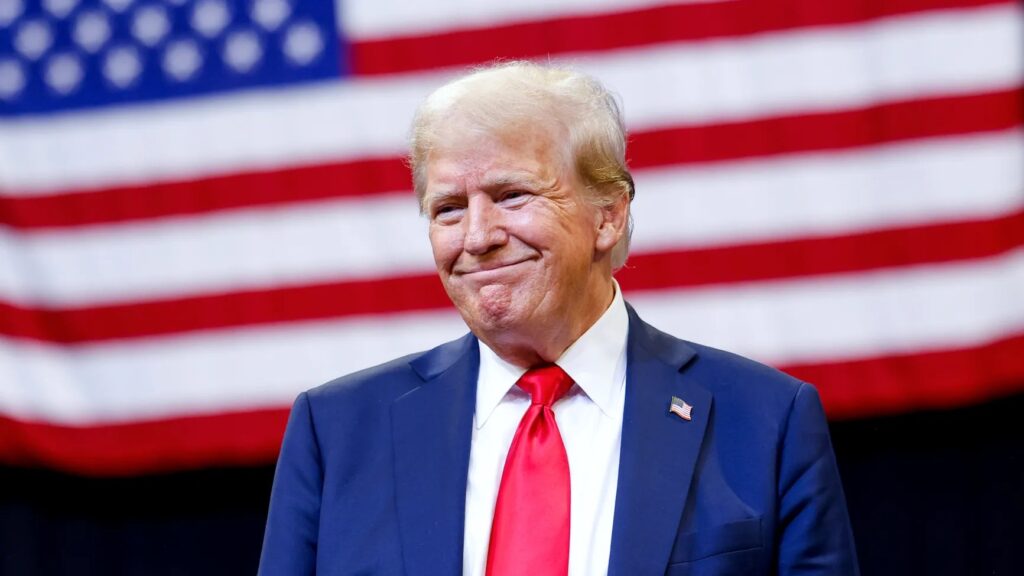As of November 6th, Donald Trump is poised to become both the 45th and 47th President of the United States. Moreover, Trump will be the first Republican to win the popular vote since George W. Bush in 2004. This development has prompted many Democratic voters—and international observers—to question what his return might mean for them. Yet, from a historical perspective, the lives of people across diverse backgrounds—regardless of race, creed, or sexuality—may see fewer changes than anticipated.
Historically, despite differences in rhetoric, modern Democratic and Republican administrations have often pursued similar foreign and domestic policies. Many of the policies associated with Trump’s previous administration, frequently criticized by the media, were in fact continuations or expansions of initiatives from prior administrations.
For instance, American detention centers originated under the Clinton administration, which introduced a policy of mandatory detention through legislation. This practice has not only persisted but expanded; according to the ACLU, the daily number of detainees has doubled under the Biden administration—from 15,000 to over 30,000 compared to the final year of the previous administration. Interestingly, Democratic leaders largely condemned these practices only when implemented by a Republican administration. Many may recall Congresswoman Alexandria Ocasio-Cortez’s emotional protest at the fences around these facilities; however, her stance, along with those of other prominent voices, has been notably quieter during Biden’s tenure.
Similarly, the wall often credited to Donald Trump has roots in earlier policies. The construction of border barriers began under President George H.W. Bush, who authorized fencing along the San Diego–Tijuana border. This effort intensified under President Bill Clinton, who signed the Illegal Immigration Reform and Immigrant Responsibility Act of 1996. This legislation reinforced immigration control measures and facilitated the expansion of barriers along the U.S.-Mexico border. Over time, successive administrations—both Democratic and Republican—have contributed to border fortification, revealing a bipartisan commitment to heightened border security.
The Tax Cuts and Jobs Act (TCJA), passed during Trump’s administration, is often seen as a hallmark of his tenure. Yet similar tax policies have a bipartisan legacy. Under President George W. Bush, the so-called Bush Tax Cuts primarily benefited wealthier households, according to the Center on Budget and Policy Priorities (CBPP). While these cuts were designed to expire, the subsequent Obama administration chose to extend many of them, underscoring a shared commitment to lower taxes for high-income earners.
Furthermore, during the 2008 financial crisis, the Obama administration enacted the Emergency Economic Stabilization Act, directing billions of dollars to major financial institutions. While intended to stabilize the economy, this action primarily benefited wealthy sectors rather than the average citizen. Both Democratic and Republican administrations, therefore, have contributed to policies that prioritize economic benefits for corporations and high-income households, reinforcing an ongoing trend of wealth concentration among the nation’s wealthiest.
While Trump and his administration often portrayed their foreign policy as fundamentally different from their predecessors, their actions reflected continuity, particularly regarding Ukraine. Under George W. Bush, from 2001 to 2008, the U.S. provided approximately $1.1 billion in aid to Ukraine. This figure increased to $2.1 billion during the Obama administration. Despite rhetorical departures, Trump continued this upward trend, allocating $446 million to Ukraine in his first year alone—nearly double the $270 million provided by Obama during his first year in office. Although Trump briefly withheld military aid in 2019, he ultimately approved its release, underscoring that, aside from his confrontational rhetoric, U.S. policy toward Ukraine largely remained consistent with prior administrations.
The narrative that Democrats have been the primary harbingers of civil rights in the United States often overshadows the crucial role of grassroots activism, unions, and advocacy groups. Historically, major civil rights advancements have been the result of relentless pressure from these movements rather than proactive political leadership. For example, the establishment of the weekend on September 8, 1947, was a victory secured by trade unions through sustained collective bargaining and advocacy—not a gift from policymakers.
Similarly, the Civil Rights Movement’s achievements came from the tireless efforts of leaders like Martin Luther King Jr. and Malcolm X, as well as countless activists who mobilized public opinion and challenged systemic injustice. These efforts forced lawmakers, including Democratic leaders, to act. Legislative milestones, such as the Civil Rights Act of 1964, were hard-won victories achieved only after public pressure reached critical mass, compelling politicians to respond. Often, Democratic support for these movements was rhetorical, with meaningful concessions made only when there was no political alternative.
All of this evidence and more challenges the narrative being put forth by Democratic leadership. While the rhetoric of the incoming Trump administration is likely to be more toxic and chaotic than that of Biden or Obama, the actual policies enacted and civil liberties granted are unlikely to change significantly. Any shifts or rollbacks in these areas would likely occur regardless of whether Trump or Kamala Harris occupies the Oval Office. The broader patterns of policy and governance are shaped by entrenched institutional forces, which are unlikely to be drastically altered, whether the president is blue or red.


